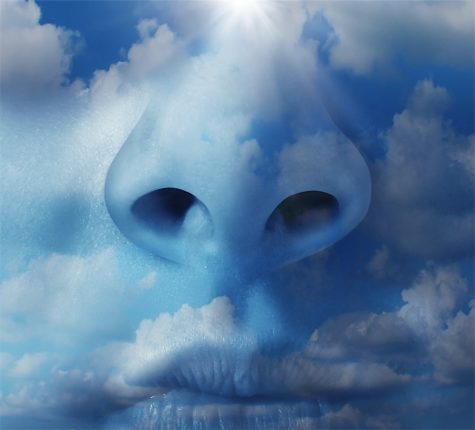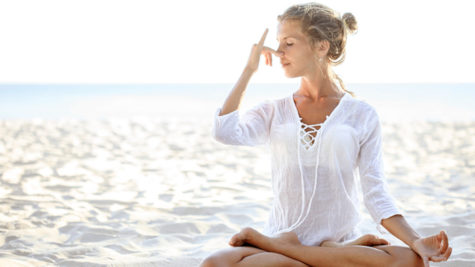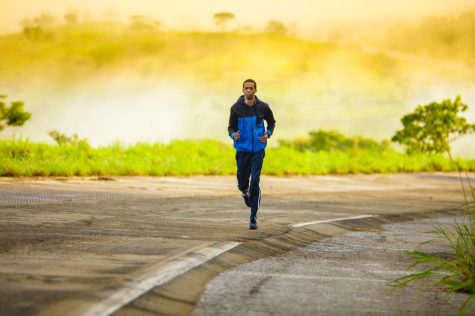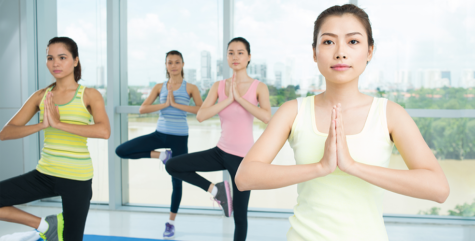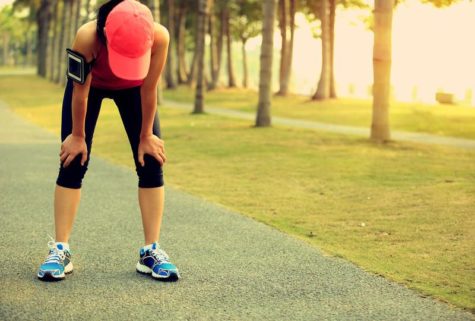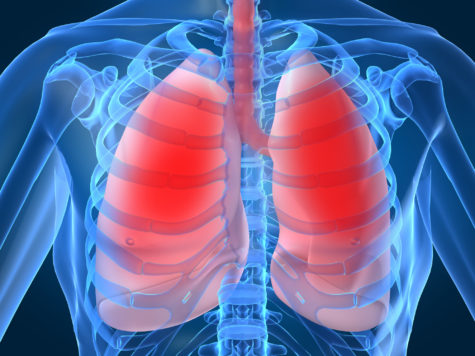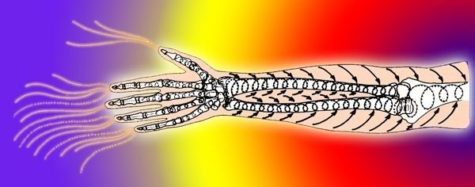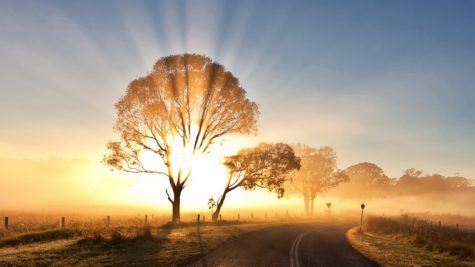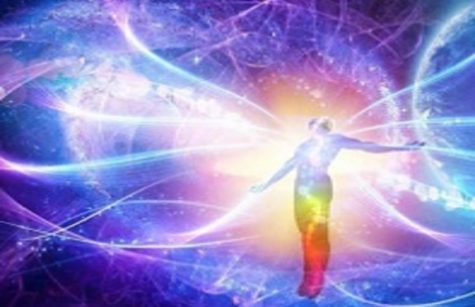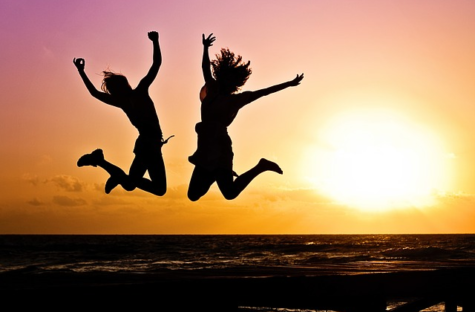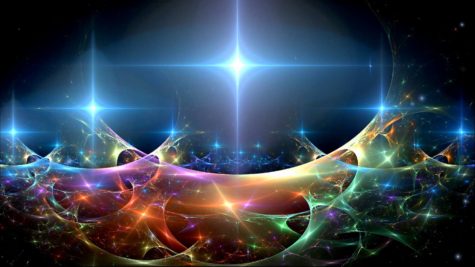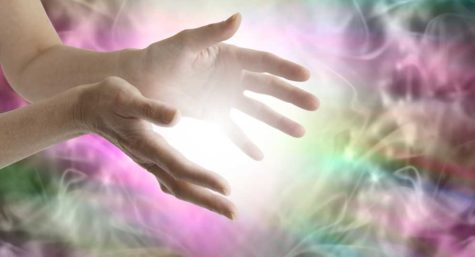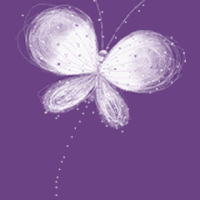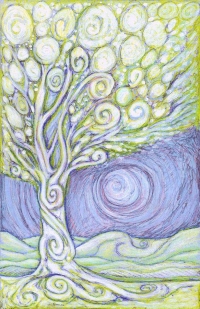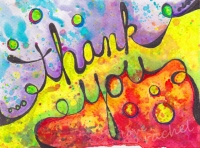Energy
Pranayama
Prana means ‘ vital force ‘ and Ayama means ‘ control ‘ in Sanskrit. Thus Pranayama means the control of the vital force through concentration and regulated breathing. By means of controlled breathing that is, inhaling and exhaling by holding the breath for a fixed time and changing the rhythm of inspiration and expiration, it is possible to influence the life-force in the body. Pranayama is the process by which such conscious control is achieved through controlled and rhythmical breathing .
Pranayama purifies the channels along which the life stream of ‘prana’ flows in the body and prevents various disorders. It increases one’s resistance to respiratory diseases. The best position in which to practice pranayama is the padmasana or lotus pose.
If for some reason that position is difficult to adopt, it can be done while sitting in any comfortable pose. The important thing is to keep the back, neck and head in a straight line. The body should be in its natural relaxed condition and this can be achieved by resting a few minutes in shavasan. If necessary, use your right finger and thumb on either side of the nose to control the right and left nostrils during inhalation and exhalation.
In practicing pranayama, a ratio of two to one should be maintained throughout, that is, the exhalation time should be double that required for inhalation. For instance, if inhalation takes 5 seconds, exhalation should take 10 seconds. Both inhalation and exhalation should be smooth and quiet.
Some varieties of pranayama beneficial in the treatment of common ailments are as follows :
- Anuloma-viloma
This is also known as Nadishuddhi pranayama. Sit in any comfortable meditative pose, keeping your head,neck and spine erect. Rest your left hand on your left knee. Close your right nostril by pressing the tip of your right thumb against it. Breathe out slowly through the left nostril. Inhale slowly and deeply through the left nostril, keeping the right nostril closed. Close your left nostril with the little finger and ring finger of your right hand and exhale through the right nostril. Then inhale through the right nostril, keeping the left nostril closed and, lastly, exhale through the left nostril, keeping the right nostril closed.
This completes one round of anuloma-viloma. Repeat the entire process. Inhaling and exhaling should be done very slowly, without making any sound. This pranayama is a process of purification. It strengthens the lungs and calms the nerves. It helps cure cough and cold, insomnia, chronic headache and asthma.
- Ujjayi
Sit in any comfortable meditative pose. Inhale slowly, deeply and steadily through both nostrils with a low uniform sound through the glottis. Hold your breathe for a second or two after inhaling and then exhale noisily only through the left nostril, keeping the right nostril closed. Do this as often as required.
This pranayama clears the nasal passage and helps the functioning of the thyroid gland and benefits respiratory disorders, especially bronchitis and asthma. Persons suffering from high blood pressure should not practice ujjayi.
- Bhastrika
‘Bhastrika’ means ‘bellows.’ It is performed by instant and quick expiration of breath. There are many varieties of bhastrika. The simplest technique is as follows :
Sit in padmasana. Do 20 strokes of kapalbhati. Inhale and exhale rapidly, making a puffing sound. This is a good exercise for abdominal viscera and lungs.
- Sheetali
Sit in padamasana or any other comfortable posture. Stick your tongue out about an inch from the lips, rolled up at the sides to form a channel like a bird’s beak. Suck in air through the channel. After a full inhalation, slowly close your mouth, hold your breath and exhale slowly through both nostrils. This completes the exercise. Repeat as required.
This pranayama cools the body and mind, activates the liver and bile and has beneficial effects on the circulation and body temperature.
- Sitkari
In sitkari a sound is produced while inhaling by opening the mouth a little, placing the tip of the tongue against the lower front teeth and then sucking the air in slowly. After holding your breath, exhale through both nostrils. This exercise helps to control thirst, hunger and laziness.
- Suryabhedan
‘Surya-nadi ‘ is the right nostril and ‘ChandraNadi’ is the left nostril. In this pranayama, one always uses the right nostril for inhalation. Sit in padmasan or any other suitable posture. Keep your head, neck and back straight. Inhale through the right nostril. Hold your breath and then exhale through the left nostril. Hold your breath and then exhale through the left nostril. Repeat as often as required.
This pranayama increases gastric juices and helps digestion. It also fortifies the nervous system and clears the sinuses.
- Bhramari
In this pranayama, the buzzing sound of a bee is produced and hence it is called bhramari. Keep your mouth closed while inhaling. Exhale through both nostrils, producing the humming sound of a bee. This pranayama affects the ears, nose, eyes and mouth and makes the complexion glow. It also helps those suffering from insomnia.
About Yoga Therapy
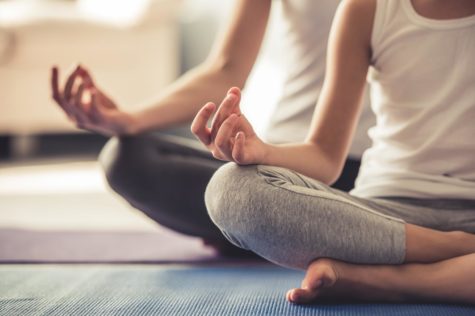
The Yoga Therapy or ‘ yoga-chikitsa’ refers to the treatment of diseases by means of yogic exercises which may be physical or mental or both. It is a specialized form of yogic culture. This mode of treatment has been practiced in India from very ancient times. Many references to yoga have been made in the Upanishads. It was, however, Maharishi Patanjali who in about the first century B.C. gave a systematic account of the traditional yogic teaching.
The term ‘ Yoga’ is derived from the Sanskrit root ‘yug’ which means “to join” . It signifies union between the individual soul (jivatma) and the universal soul (parmatma). It aims at obtaining relief from pain and suffering. Basically, human evolution takes place on three different planes, namely physical, mental and spiritual. Yoga is a means of attaining perfect health by maintaining harmony and achieving optimum functioning on all three levels through complete self-control.
Yogic kriyas, asanas and pranayama constitute the physical basis of yoga. More information about them can be found here:
The practice of kriyas and asanas leads to excellent circulation. It also energizes and stimulates major endocrine glands of the body. Yogic exercises promote inner health and harmony, and their regular practice helps prevent and cure many common ailments. They also help eliminate tensions, be they physical, mental or emotional.
Pranayama slows down the ageing process. In ordinary respiration, one breathes roughly 15 times a minute, taking in approximately 20 cubic inches of air. In pranayama the breathing rate is slowed down to once or twice a minute and the breath inhaled is deep and full, taking nearly 100 cubic inches of air.
All yogic exercises should be performed on a clean mat, a carpet or a blanket covered with a cotton sheet. Clothing should be light and loose-fitting to allow free movement of the limbs. The mind should be kept off all disturbances and tensions. Regularity and punctuality in practicing yogic exercises is essential. Generally, 5 a.m. to 8 a.m. is the ideal time for yoga practices.
Asanas should always be practiced on an empty stomach. Shavasana should be practiced for a brief period before starting the rest of the exercises as this will create the right mental condition. Asanas should be performed at a leisurely slow-motion pace, maintaining poise and balance.
Yoga asanas and pranayama techniques are greatly enhanced if you have the help of a competent teacher.
Exercise in Health and Disease

A world famous physical educationist, Eugene Sandow, has very aptly said, ” Life is movement, stagnation is death. ” Physical exercise is essential for the maintenance of normal condition of life. Lack of natural exercise is one of the chief causes of weakness and ill-health.
In recent years, the need for exercise has been recognized even in sickness. Physio and occupational therapy are now standard procedures in medicine to restore the use of muscles and nerves that have been injured by disease or by accident. Patients with organic ailments are now advised to stay in bed for the minimum period considered necessary.
Exercise and Activity
For corrective living, it is essential to differentiate between exercise and activity. While both are important as they are involved in vital physical movement, they vary in degree and benefits. Both employ the body in voluntary movement.
Activity uses the body to a limited degree and generally to achieve a specific purpose. Exercise employs the body over the widest possible range of movement for the particular purpose of maintaining or acquiring muscle tone and control with maximum joint flexibility. Activity requires less physical effort and often less conscious effort once the routine has been established. Exercise demands considerable physical effort and is more beneficial as mental concentration is simultaneously employed.
Benefits
Systematic physical exercise has many benefits. The more important benefits are mentioned below: Regular exercise taken properly can achieve the increased use of food by the body, which contributes to health and fitness. The basal metabolic rate and habitual body temperature will slowly rise during several weeks of physical exercise, if the program is not too hard. The healthy person usually has abundant body heat and a warm radiant glow.
- Regular progressive physical exercise can bring about the balance of automatic, or involuntary , nervous system. The tone of the vagus nerve, one of the nerves that control sensation and motion, is strengthened. This accounts for stronger pulse waves, higher metabolism and better circulation.
- Exercise can prevent or reduce gravitational ptosis or sag, as it is commonly called. Ptosis results from uneven flow of blood in the feet, legs and lower abdomen.
- Improved capillary action in the working of muscular and brain tissue results from exercise carried to the point of real endurance. This permits greater blood flow and gives the muscles, including the heart, more resistance to fatigue. Massage, heat and moderate exercise are relatively ineffective in producing additional capillary action as compared with vigorous exercise.
- The full use of the lungs in vigorous exercise can reduce or prevent lung congestion due to lymph accumulation.
- Gas and intra-intestinal accumulations can be reduced by exercise that acts to knead and squeeze or vibrate the intraintestinal mass.
- Better respiratory reserve is developed by persistent exercise. This ensures better breath holding, especially after a standard exercise. With greater respiratory reserves, exercise become easier.
- Improvement in tone and function of veins can be accomplished by repetitiously squeezing and draining the blood out of them and then allowing them to fill.
- Sweating in exercise aids kidneys by helping to eliminate the waste matter from the body.
- Consistent exercise leads to improvement in quality of blood. Studies have shown improved hemoglobin levels, relatively greater alkalinity, improved total protein content and a grater red cell count.
- Systemic exercise promotes physical strength and mental vigor and strengthens will power and self control leading to harmonious development of the whole system.
Exercise promotes longevity Medical researchers at Harvard and Standford Universities who studied the habits and health of 17,000 middle-aged and older men, reported the first scientific evidence that even modest exercise helps prolong life.
Dr. Ralph S. Paffenberger, the visiting professor of epidemiology at the Harvard School of Pubic Health, who is the principal author of the report said, ” We have found a direct relationship between the level of physical activity and the length of life in the college men we have studied. ” He added,” This is the first good evidence that people who are active and fit have a longer life span than those who are not. ”
A strong connection between a hard and a healthy hard has also been convincingly demonstrated in the same study. The study showed that the less active persons ran a three times higher risk of suffering a fatal heart attack than did those who worked the hardest. Review of fatal heart attacks revealed that the less active men were also three times more likely to die unexpectedly and rapidly within an hour after the attack.
A parallel research report from doctors in Dulles also concluded, after a study of the lives and habits of 6,000 men and women, that the physically fit were less likely to develop hypertension. Dr. Steven N. Blair who headed the research group said, ” We followed the physical health and habits of these people for an average of four-and-a-half years and the data showed that the lack of physical fitness leads to hypertension. ”
Exercise increases calorie output. The body fat can be reduced by regular exercise. It is therefore, useful for weight reduction in conjunction with restricted food intake. According to a study by Dr. Peter Wood of Stanford University Medical School, author of “California Diet and Exercise Programme”, very active people eat about 600 more calories daily than their sedentary counterparts but weight about 20 per cent less.
Up to 15 hours after vigorous exercise, the body continues to burn calories at a higher rate than it would have without exercise. Moderate physical exercise has been found to be accompanied by less obesity and lower cholesterol levels. Regular exercise plays an important role in the fight against stress. It provides recreation and mental relaxation besides keeping the body physically and mentally fit. It is nature’s best tranquilizer.
Chronic fatigue caused by poor circulation can be remedied by undertaking some exercise on a daily basis. It helps relieve tension and induces sleep. Moderate physical exercise at the end of a try day can bring a degree of freshness and renewed energy.
Exercise also plays an important role in the treatment of depression. According to Dr. Robert Brown, a clinical associate professor at the University of Virginia School of Medicine, ” Exercise produces chemical and psychological changes that improves your mental health. It changes the levels of hormones in blood and may elevate your beta-endorphins (mood-affecting brain chemicals). Exercise also gives a feeling of accomplishment and thereby reduces the sense of helplessness. ”
Methods of Exercise
Several systems of exercise have been developed over the years, the most popular among them being the Swedish system and yoga asanas, the later having been practiced from ancient times in India. Whichever system you choose to adopt, the exercises should be performed systematically, regularly and under proper guidance. To be really useful, exercise should be taken in such a manner as to bring into action all the muscles of the body in a natural way.
Walking is one such exercise. It is, however, so gentle in character that one must walk several kilometers in a brisk manner to constitute a fair amount of exercise. Other forms of good exercise are swimming, cycling, horse-riding, tennis, etc.
Precautions
Vigorous exercise of any kind should not be taken for an hour and a half after eating, nor immediately before meals. Weak patients and those suffering from serious diseases like cancer, heart trouble, tuberculosis and asthma should not undertake vigorous exercise except under the supervision of a competent physician.
If exercising makes you tired, stop immediately. The purpose of exercise should be to make you feel refreshed and relaxed and not tired. The most important rule about the fitness plan is to start with very light exercise and to increase the effort in gradual and easy stages. The sense of well-being will begin almost immediately. One can start off with a brisk walk for 15 to 20 minutes. A comfortable sense of tiredness should be the aim.
It is valueless and possibly harmful to become exhausted or seriously short of breath. Perhaps, one should aim at activities which need about two-thirds of one’s maximum ability. One way to assess is to count your own pulse rate.
Counting of pulse is quite easy. Feel the pulse on your left wrist with the middle three fingers of your right hand. Press just firmly enough to feel the beat easily. Now count the number of beats in 15 seconds, with the help of a watch with clear second hand and calculate your rate by multiplying by four. At rest heart beats 70 to 80 times a minute. This rate increases during exercise. Really vigorous can produce rates as high as 200 beats per minute or more. Reasonable aim is to exercise at about two-thirds of maximum capacity. It follows that heart rate should be about 130 per minute during and just after exercise. Always avoid over-exertion and never allow your pulse go above 190 per minute minus your age.
Bone Breathing
Bone Breathing is the ancient Taoist tradition that brings forth good health and reduced stress. While you might not have heard of bone breathing before it is something that could really benefit you. It is something many have practiced throughout the years and is exactly what it sounds like it would be.
Bone breathing is basically a process in which someone breathes as deeply as possible in the hopes of it actually reaching their bones. There are several different methods to this and not all are going to work for everyone, you have to find the one that works best for you. This is an ancient practice that can relieve you of stress and is thought to benefit the health of those who partake.
How To Practice Bone Breathing:
The bone breathing technique allows us to ingest large amounts of this vital energy or ‘prana’. We can use this energy to stay healthy, get motivated, strengthen our sense of purpose, and generally become more powerful.
Before you begin this exercises I suggest that you consult your Doctor; if you suffer from high blood pressure, heart problems, or are at risk for aneurysms, then I suggest you talk to him before you start.
In order to begin let us imagine that the air around you and the air that fills up your lungs is actually a kind of light, you can think of this vital energy as a type of vapor or gas that is slightly thicker than the typical air around you. With this imaginative construction in mind, try to fill your lungs completely from bottom to top, just like the glass fills with water. Then try to empty out your lungs completely, just like a glass, from top to bottom. This is correct breathing and how you should be breathing all the time.
Keep that imaginative construction of the vital vapor or “prana’ in mind, it will teach you how to begin to use this ‘prana’ properly and will allow you to develop your own imaginative ideas on how to move this force through your body. I am certain that you will feel incredibly revitalized after breathing like this for a while.
In order to do bone breathing, you must begin to channel this vital energy throughout your body. Bone breathing is mostly concerned with sucking in that vital energy through different parts of the body and is therefore used while inhaling.
To begin imagine that you are breathing through the bones in your arms; think of your arm bones as being giant sponges that suck in the vital ‘prana’ through the force of your inhale. As you do this you can imagine that there is a bit of resistance because the bones in your arms are thicker and therefore harder to breathe through than your throat. Imagine sucking in the vital energy through your arm bones and filling your lungs from bottom to top just like before.
When your lungs are completely filled, you can exhaled in a quick sigh and either stop there or begin to inhale again and repeat the process.
If you have done this correctly, your arms should feel almost tingly, your blood pressure will have gone up, and you will feel more alert and energized. Now try to do the same breathing through the bones of your legs. Do this for about 10 breaths and relax for a while.
Try next to do 10 breaths through the bones on your back and then take a break for a little while. Try 10 breaths through the bones in your skull and take your brake. Finally, try to do this breath technique by breathing in through every pore in your body for 10 breaths. After this completed routine you should feel amazingly strong, and light as a feather. Keep practicing and developing your technique; the key is to combine your imagination and your breathing in order to be able to suck up huge quantities of this vital energy that is all around you.
Basically, this technique allows you to get rid of all of the negative energies surrounding you and bring forth positivity. It is something that we should all do several times each day or at least five times a week if possible. If you are a person that tends to hold onto stress this might really make a big difference for you. Taoist masters even believed this could regenerate bone marrow.
Sources:
For Health, Beauty, and a Peaceful Mind
The Path of Health, Beauty, and a Peaceful Mind is not difficult to follow and only requires five simple steps.
Good Nutrition and Clean Water and Fresh Air
For Your Cellular Structure, the Inner Self.
Exercise
For the Muscular Self and to Improve Circulation
Hydrotherapy with Herbs
Lots of Healing Baths for the Physical Self
Massage / Acupuncture / Hugs
For the Circulation and to Balance the Electrical Forces in the Body
Aromatherapy
Inhalations for the Mind
Externally for the Entire Body and the Subconscious Self
So keep smiling, work hard, and take care of yourself.
~Jeanne Rose
About Psychic Healing
Psychic or spiritual healing is a human potential we all possess. Some people are especially good at this. It is probably easier to heal someone else by occult means than yourself. In addition to healing in the presence of the person, there is ‘absent healing’ in which the healing occurs at a distance.
Note that there are some who maintain that influence on another person without his specific knowledge and permission (yes, even in healing and helping) is black magick. (After all, everybody is living according to his own true will, so that healing or helping someone without permission is affecting his will). This means it is important to tell the person what you are planning to do and to ask his permission.
The theory of psychic healing is that sickness is characterized (although not necessarily caused) by a deficiency and imbalance of vital energy. Psychic healing transfers energy from the healer to the sick to repair and rebalance his energies.
If an inept healer overdoes the process, or if he doesn’t take the precaution to ‘disconnect’ himself afterwards, he may find himself becoming sick due to energy drain and a linkage to his subject. Similarly, the healer should always be in a good state of health or he could unintentionally transfer his illness to the subject.
Psychic healing should always be combined with medical care and treatment. It does not replace doctors, medicine, or hospitals, since different levels (worlds) are involved.
The basic methods of psychic healing are:
- Visualization
- Prayer
- Ritual
Creative visualization is one of the easiest techniques. Mild illness may yield to only one or two treatments; serious ills will require many treatments over time. In creative visualization, we visualize the person being well. It may be helpful to utilize the appropriate color from the aura chart (such as bright apple-green, rose pink, or white) sent as a beam to the person or as a cloud surrounding him. This technique can be extended to include a simple kind of yoga in which we feel energy sent as we exhale explosively; the energy sent either via the breath or from one of the chakras such as the solar plexus.
Prayer is also a simple technique. This can range from invocations to a specific deity complete with offerings and candles to a recitation of the ‘Lord’s Prayer’, the 23rd, and/or the 91st Psalms.
Channeled healing energy – such as Reiki, and other systems – are essentially a combination of visualization and prayer, and can be learned. Reiki is one of the simplest methods to practice, and is worth exploring.
A banishing ritual is helpful in psychic protection and healing since it forms a protective barrier against malevolent forces. The psychic barrier it creates can be made to permit entry of desired (constructive) forces and the exclusion of negative ones. Thus, the banishing ritual is an essential first step in almost any formal full magick ceremony. Here’s a link to a Simple Banishing Ritual.
Note: Sometimes in absent healing it is helpful to arrange a time for treatment in advance, asking your subject to be in a receptive state of mind and to sit back and close his eyes.
Author: Phil Hansford
Turn Back Your Biological Clock
Rejuvenation is the deliberate restoration of youth and vigor through self-intervention in the aging process. Negative mental states such as anxiety, depression, hostility, and insecurity tend to be debilitating, hastening the aging process.
Positive mental states such as self-confidence, self-esteem, self-acceptance, and a sense of personal adequacy are empowering and inject rejuvenating energies into the body, eradicating those disempowering states which contribute to aging.
Love, for example, is one of the most empowering rejuvenation elements know. When present in the psyche, it neutralizes hate, its negative counterpart that is destructive. Dormant rejuvenating forces already exist within each of us and can be activated to intervene in the physical aging process.
Psychic Rejuvenation
- Step 1:
Relaxation. Physical relaxation sets the stage for using your psychic faculties to intervene in the body’s many functions. Close your eyes, slow down your breathing and allow your muscles to relax from the forehead down followed by the affirmation:
“I am now in full charge of my body. I am capable of influencing every function, mental and physical. All rejuvenating energies of my being are now at my command.”
- Step 2:
Stress Expiation. Even when stress is reduced through relaxation, certain residual effects tend to linger. By visualizing the major systems and organs of the body and mentally infusing them with rejuvenating energy you can extinguish the residual effects of stress on the body. Energizing the body’s systems and organs is accomplished by centering full awareness on various body regions and mentally bathing them with glowing energy while using the following affirmation:
“Youthful, invigorating energy is now flowing throughout my body. All organs systems and functions are now revitalized. The wear-and-tear of stress is now replaced by the flow of youth and vigor.”
- Step 3
Balance. With the body physically relaxed and the residual effects of stress relieved, an empowering state of full balance is possible through a technique called the Fingerpad Engagement Procedure. Designed to balance left- and right-brain functions, this procedure attunes the mind and body-a condition essential to rejuvenation.
Bring the tips of your fingers together; then with the fingerpads in a comfortable position, with your eyes closed, imagine your hands as antennae for your brain. Imagine your left brain actively generating positive energy, which flows into your right hand as an extension of that hemisphere.
Next, imagine your right brain producing positive energy which flows into your left hand as an extension of that hemisphere, Allow the energies flowing into your hands to mingle and create a powerful exchange that balances your mental and physical systems. After a few moments, disengage your fingerpads and allow your hands to relax, palms side up. Conclude with the following affirmation:
“My total being is balanced and infused with rejuvenating energy. The energies of youth are now unleashed to flow throughout my being. I am completely attuned within myself and with the world.”
- Step 4:
PK Illumination. This is the final and most critical step in the rejuvenation process. Visualize or look at a photograph of yourself in your youthful prime. Study this image, carefully noting the youthfulness in your eyes. Now close your eyes and visualize yourself at the peak of youth standing before a full-length mirror. Study your eyes in the mirror and observe a youthful gleam. Next, surround yourself with a glow of energy, then think of your favorite color. Finally, while breathing slowly and rhythmically, soak in the rejuvenating glow enveloping your body. Conclude with this affirmation:
“My powers of rejuvenation are now being unleashed to permeate my total being with the glow of youth and vigor. Every system within is now being revitalized with the infusion of rejuvenating power. Tired, worn tissue is being fortified with the energies of youth. Every function of my body is now fully infused as sparkling youthful energy is absorbed into every cell and fiber.
Surrounded by a colorful aura of rejuvenating energy, I am now secure in the present, bathed in vitality and the glow of youth. My inner rejuvenating powers are fully and completely unleashed to flow freely throughout my total being. Each day, my mind and body absorb the abundance of youthful energy that is constantly being unleashed within my being. Whenever I envision myself enveloped with the colorful glow of radiant energy, I will immediately become invigorated and fully empowered.”
- A Final Note:
This rejuvenation procedure can be repeated daily, or as often as you wish. You may want to place a small, self-adhesive star or other reminder on your mirror, computer, or TV as a cue to periodically re-activate the inner flow of rejuvenating energy. With practice, the process of combining visualization with affirmations and tapping into the dormant powers of rejuvenation within you will become a natural, spontaneous and continuous function.
© 1995 by Joe Slate Ph.D.
What is Reiki?
Reiki is a Japanese technique for stress reduction and relaxation that also promotes healing. It is administered by “laying on hands” and is based on the idea that an unseen “life force energy” flows through us and is what causes us to be alive. If one’s “life force energy” is low, then we are more likely to get sick or feel stress, and if it is high, we are more capable of being happy and healthy.
The word Reiki is made of two Japanese words – Rei which means “God’s Wisdom or the Higher Power” and Ki which is “life force energy”. So Reiki is actually “spiritually guided life force energy.”
A treatment feels like a wonderful glowing radiance that flows through and around you. Reiki treats the whole person including body, emotions, mind and spirit creating many beneficial effects that include relaxation and feelings of peace, security and well being. Many have reported miraculous results.
Reiki is a simple, natural and safe method of spiritual healing and self-improvement that everyone can use. It has been effective in helping virtually every known illness and malady and always creates a beneficial effect. It also works in conjunction with all other medical or therapeutic techniques to relieve side effects and promote recovery.
More Reiki information can be found here: Twofeathers Reiki
